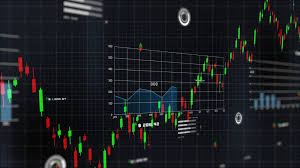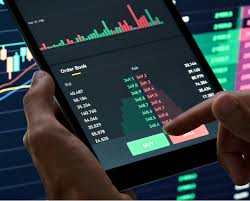
Revolutionizing Trading Automation Crypto: Strategies, Tools, and Future Prospects
In recent years, the crypto market has seen explosive growth, drawing in traders and investors from around the globe. Among the numerous advances within this sector, Trading Automation Crypto http://recursosanimador.com/scripts/librovisitas2.php?pagina=7382 has emerged as a game-changer. Automated trading systems allow traders to execute trades at lightning speed, manage multiple assets, and remove the emotional aspect of investing. This article explores the intricacies of trading automation in the realm of cryptocurrency, discussing its benefits, the tools available, and strategies for implementing an efficient automated trading setup.
Understanding Trading Automation
Trading automation involves using software to execute trades based on predefined criteria without human intervention. This approach harmonizes with the volatile nature of cryptocurrencies, where seconds can lead to significant losses or gains. The essence of trading automation lies in the ability to program a set of rules based on technical indicators, price movements, or other variables, allowing for efficient and timely trading.
The Importance of Trading Automation in Crypto
The crypto market operates 24/7, making it nearly impossible for traders to monitor price movements round-the-clock. Here are some critical reasons why trading automation is crucial:
- Speed: Automated trading systems execute trades in milliseconds, taking advantage of fleeting market opportunities that a manual trader might miss.
- Emotion-free Trading: Automation removes emotions such as fear and greed, allowing traders to stay disciplined and follow their strategies without undue influence.
- Backtesting: Many trading bots and algorithms come with backtesting features, enabling traders to evaluate their strategies using historical data before risking real capital.
- Diversification: Automated trading allows traders to monitor multiple pairs and assets simultaneously, facilitating effective portfolio diversification.
Key Tools for Trading Automation
When it comes to trading automation, various tools and platforms are available that can help traders implement their strategies effectively.
1. Trading Bots
Trading bots are perhaps the most well-known tools for automation. They can execute trades on behalf of the trader, based on pre-set conditions. Popular trading bots include:
- 3Commas: A versatile platform that allows for smart trading and portfolio management.
- Cryptohopper: A cloud-based crypto trading platform that equips traders with a wide array of tools, including backtesting and trading strategy creation.
- HaasOnline: Offers a powerful scripting language for advanced strategies and supports numerous exchanges.
2. APIs (Application Programming Interfaces)
Many cryptocurrency exchanges provide APIs that enable traders to develop their automated trading systems. By utilizing APIs, traders can create customized solutions that align perfectly with their trading strategies.
3. Trading Platforms
Platforms like Binance, Bitfinex, and Kraken often offer built-in automation features, making it simpler for traders to set their parameters without the need for extensive coding.

Effective Trading Strategies for Automation
Not all trading strategies translate well to automated systems. Here are some effective approaches:
1. Trend Following
One of the simplest yet effective strategies is to implement a trend-following algorithm. This strategy buys when an asset is in an upward trend and sells when it shows signs of reversal.
2. Arbitrage
Arbitrage involves exploiting price differences across various exchanges. With automation, traders can assess multiple exchanges simultaneously and execute trades instantly whenever a disparity is identified.
3. Market Making
Market-making bots provide liquidity in the market by placing buy and sell orders around a particular price. This strategy can benefit from the spread while minimizing risks associated with price movements.
4. Mean Reversion
This strategy assumes that the price of an asset will revert to its historical mean. An automated trading system can track prices and execute trades whenever they diverge significantly from their historical averages.
Challenges and Risks of Trading Automation
Despite the advantages of trading automation, traders should be aware of the potential challenges:
- Technical Malfunctions: Automated systems heavily rely on technology, and any glitches can lead to disastrous financial consequences.
- Market Volatility: Unexpected market shifts can cause automated systems to fail, leading to losses when the algorithms are unable to adapt quickly.
- Over-optimization: Some traders may optimize their algorithms to the extent that they perform well in backtesting but fail in live conditions.
- Security Risks: Automated trading requires access to significant amounts of capital, which can be jeopardized through hacking or other security breaches.
Future Trends in Crypto Trading Automation
As the cryptocurrency market continues to mature, several trends are emerging in trading automation:
- Advanced AI and Machine Learning: The integration of AI to develop smarter trading bots is on the rise, enhancing predictive capabilities and overall success rates.
- Social Trading: Platforms allowing users to copy successful traders’ automated strategies are gaining popularity, democratizing access to effective trading methods.
- Improved Regulatory Frameworks: As cryptocurrencies become mainstream, regulatory advancements will likely lead to more secure trading environments, benefiting automated trading systems.
Conclusion
Trading automation in the crypto world offers tremendous potential for profitability and efficiency, allowing traders to leverage advanced tools and strategies while mitigating risks. While challenges remain, staying informed and adopting best practices can empower traders to make the most of this innovative approach. As technology and cryptocurrency markets evolve, embracing automation may very well define the future of trading in this fascinating space.
